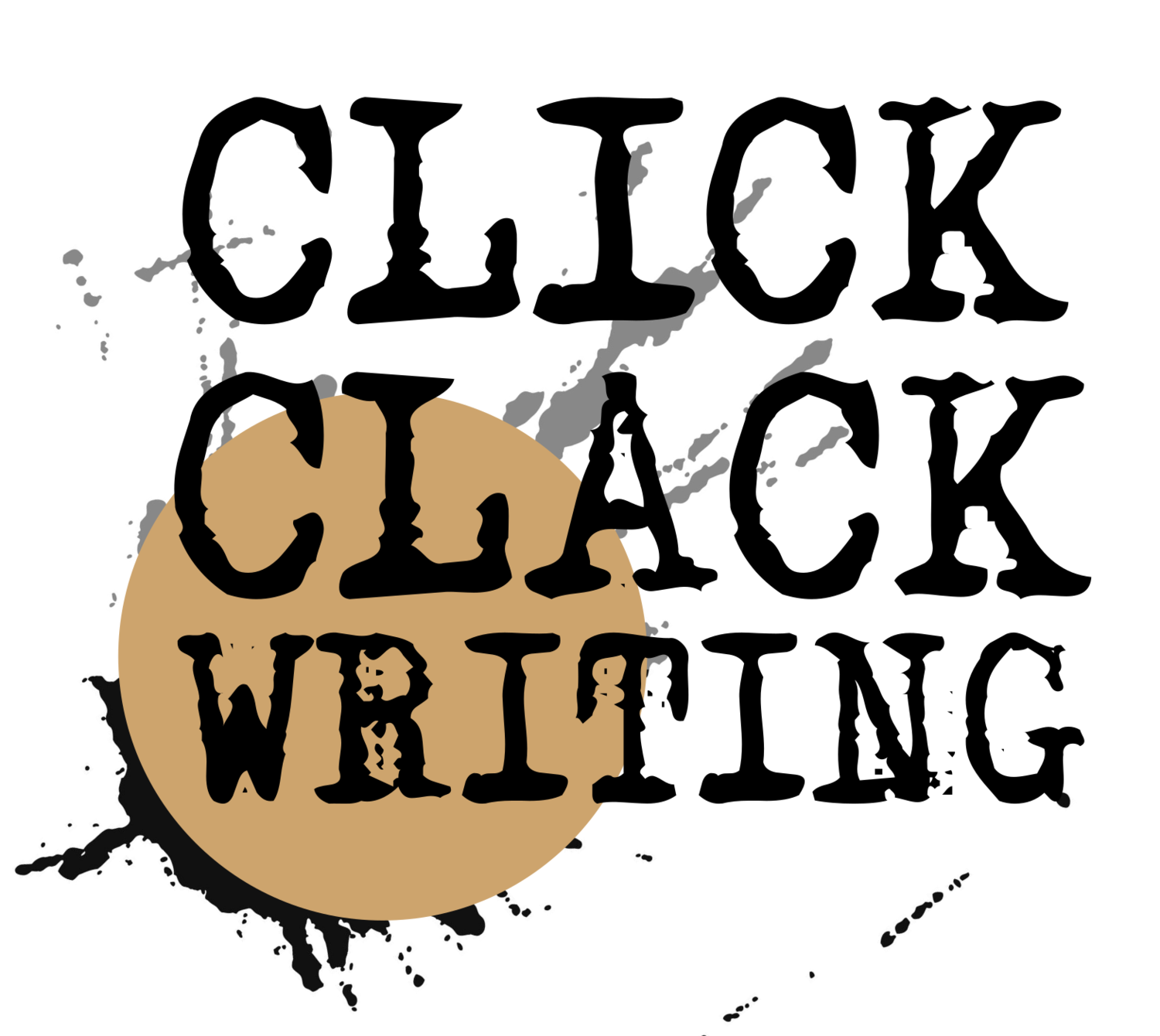When I began freelancing in 2012, I had no idea how to price my work. Up to that point, I had been working in normal, W-4 jobs that either paid an hourly wage or were salaried. I didn’t have to think about how to price writing a 500-word blog post or editing a white paper or (eventually) ghost writing a business book or memoir. Coming up with a fee structure seemed tricky as juggling flaming pins while balancing on a ladder on top of a tightrope set ablaze (an actual act I saw at the local Ren Fest).
My current pricing rubric is the result of much trial and error. During my early years, I chronically undercharged for services and wondered why I was constantly busy, yet barely scraping by. My intention for writing this blog post is to help you avoid some of the headaches and financial struggles I coped with during my first several years of freelancing. I can’t guarantee you’ll never experience issues with setting your fees (even a decade into my freelance career, I still encounter the oddball project that takes far more time than I’d expected), but hopefully these pointers will help you find your stride quicker than I did. And I promise, this isn’t nearly as tricky as developing your tightrope-fireball-juggling routine.
NOTE: Before we jump in, I need to mention that I’m approaching this article from the lens of a freelance writer/editor. I know several of these lessons are universal, but some may not apply to your particular freelance profession. In fact, even if you are a freelance writer, your experiences may differ from my own. Keep that in mind as you read, and consider how you might modify some of these tips to fit your unique circumstances.
So…shall we? Here are 4 areas to consider when setting your freelance pricing structure:
1. Know Yourself
Image by Renan Brun from Pixabay
One of the most important factors in setting your prices is knowing how quickly you work, how many projects you can juggle (haha) at once, and how much downtime you need between projects. It is crucial to track your hours when you’re working on a project. And don’t just track your actual work time; make sure you also track how long you spend writing emails that are related to your current project AND how much time you spend thinking about the project (yes, thinking and planning time counts as work!).
Tracking your hours will give you a sense of your general pace. How quickly can you copyedit a standard manuscript page? How quickly can you write a 1,000-word blog post that requires little research? How about a 1000-word post that requires a good deal of research and interviews? Understanding your work pace is essential for price-setting (although it’s far from the only factor).
You also need to track how long it takes you to wind down from one project and jump into another one. If you’re like many people, you need a few minutes (at least) to switch gears. Why keep track of this time?
Breaks are an essential part of the average eight-hour work day. As a freelancer, it pays to remember that.
Let me quickly make my case for factoring in break times:
In most workplaces, people are paid during their breaks. This could be a formal “you get 15 minutes every four hours” situation, or it could be informal (people playing sudoku at their desks or chatting with their co-workers). It’s normal and healthy to take a break. Meaningful breaks give you a chance to reset and recharge. They also give you an opportunity to let your mind wander, to reflect, or to engage in some creative thinking. Steve Jobs and Albert Einstein were big proponents of “do nothing” time, in which they sat quietly or engaged in a non-work-related activity (Einstein was a fan of riding his bike). This “do nothing” time was invaluable for promoting creative, innovative thinking and improving productivity.
As a freelancer, you have to consider the totality of a project. How much time does it take to plan for the project (this includes emails, phone calls, and virtual chats with the client)? How much time will the actual work take (including thinking time and outlining)? And how much time will you need to unwind from one project and begin another?
For many projects, it’s a good idea to factor in an extra hour or two when you’re thinking about how much to charge. This will usually cover your setup time (emails, phone calls) and wind-down time. This time allotment will go up if you need to constantly check in with the client or perform interviews, but those are usually special cases.
The bottom line: Develop an understanding of your work pace.
2. Know Your Experience Level
Image via Pixabay
It’s a simple fact that if you are more experienced in your profession, you’re considered more valuable and, therefore, able to command a higher price. Usually, the rationale for charging more as you gain experience is justified. As you become immersed in your work, you’ll likely encounter a wide array of projects and customers, and gain an understanding of how best to meet clients’ needs.
Presumably, you’ll also invest heaps of hours in continuing education. As a writer/editor, I’m constantly reading articles or books about writing and editing, I’m involved in several writing critique groups, I attend writing and literature conventions, I watch writing-related YouTube vids, I network with other writers IRL and on social media, and I practice my own fiction writing (under the pen name Kate Bitters). Don’t sell yourself short when it comes to time you’ve spent learning the ins and outs of your profession. Chances are, you know more about what you do than the vast majority of the population, and that’s worth something.
Keep your experience level in mind when considering how to price your services.
When you’re first embarking on your freelance journey, you’ll likely have to charge a lower rate until you’ve gained experience and a list of clients who can vouch for you. However, you don’t have to do this work for free! Everyone is a beginner at some point (architects, servers, IT professionals, cab drivers…), and they still earn income as they begin to learn their trade. So, why do some first-time freelancers feel they must give away their services for free?
This is a complicated question, and the basic answer is this: People give away their services for free when they don’t yet have anyone to vouch for them.
Though that can seem like a daunting problem, I have a few suggestions to help you get your first paid gig:
Post your portfolio on your website (yes, it’s a good idea to build a website).
Offer to send samples of your work to interested clients.
Offer a satisfaction guarantee.
Reach out to your network first (family, friends, former instructors) to get your first set of clients.
I could go on, but I think this is a subject for a different blog post. (What do you think? Would you like to know more about how to snag your first few paying clients? Let me know!)
The bottom line: Understand your experience level and charge accordingly. Raise your prices incrementally as you gain experience
(That last point could also be a separate blog post).
3. Know the Market
(A different kind of market) Image via Pixabay.
It’s not difficult to do a little research to figure out what freelancers in your industry typically charge for their work. If you type “What to charge for copyediting” into your search bar, you’ll get dozens of results (and opinions!). The problem is, there’s often no real consensus on what to charge. Usually, you’ll end up with a range of fees, and from there you’ll have to decide which fee fits your situation best (given your experience, your goals, and the parameters of your project).
Prices can also fluctuate based on where you live in the U.S or the world, given the wide range in costs of living. This is getting to be less of a factor, however, in our increasingly digital world (in which you could mostly work with clients in NYC, but live in Montana).
One handy pricing shortcut: certain industries have professional membership organizations that publish recommended pricing. In the editing world, the Editorial Freelancers Association has published this enormously helpful guide to help editors of all stripes figure out their pricing. I somewhat disagree with the chart (for me, copyediting is FAR more time consuming than developmental editing…again, a topic for another post!), but it’s an excellent baseline.
Given the wide range of fees you’ll likely encounter, this type of research might leave you a tad frustrated (I get it; I’ve been there), but at least it will give you a jumping-off point. From there, you could join freelancer forums (a great writing/editing forum is Freelance Writers Den, run by Carol Tice) or even reach out to other freelancers in your industry to ask about their pricing (this is probably a long shot, unless you know someone personally who might be willing to help).
The bottom line: Understand your industry’s going rates.
4. Know Your Annual Income Target
Image by irinakeinanen via Pixabay
Let’s start with a simple calculation, then I’ll dig in to the purpose of defining these figures.
First, answer two questions:
How much money would you like to make next year?
How many weeks would you like to take off next year (for vacation, crocheting camp, whatever)?
Let’s say you’d like to make $60,000 in a year and work 48 of the 52 weeks.
$60K divided by 48 equals $1,250. That means you’ll have to make $1,250/week to hit your goal.
Now, divide that by the 5 days in a typical work week.
$1,250 divided by 5 equals $250.
To achieve your income target, you’ll have to earn an average of $250 per day.
Does that sound daunting? I’ll be straight with you. It is.
In my profession, it’s pretty easy to pick up small writing projects—the jobs that earn you a couple hundred dollars a pop. But, if you’re only earning a couple hundred dollars per project, you’ll need to complete a project EVERY. SINGLE. DAY. to earn your income goal. In this scenario, if you’re paid an average of $250 per project, you’ll need to crank out 240 projects per year! That is…unsustainable. And unrealistic. Not to mention, you’ll burn out quicker than an egg on a hot skillet.
I give you this scenario not to discourage you, but to be completely candid about how firm you need to be with your pricing. Do NOT let clients nickel and dime you. Your work is worth more than that, and YOU are worth more than that.
Realistically, you probably won’t hit your income goals when you first start freelancing. I didn’t. I worked as a server in the morning, slinging pancakes and coffee until I built up my writing and editing business. Was it worth it? Yes. For sure. But I still—a decade into freelancing—experience lean months and tough days.
Now, back to the income goal calculation:
Once you understand how much you’ll need to make in a given day to reach your income goals, you can start to be fearless with your asks. You know how much you’d like to earn, and the only way to achieve that is to NOT discount your pricing. (Stay within a realistic pricing range, of course, as determined by the factors we already discussed.)
Additionally, if a project is too small, it simply may not be worth your time. I have learned to say no to certain projects that are too tiny (or do not fit my skillset).
Caveat: When you’re starting your freelance career, it’s not necessarily a good idea to say no to too many offers. You’re just getting your feet wet and you need all the experience you can get, even if a particular project stretches your comfort zone a tad.
The bottom line: Define your income goals and keep them in mind when you’re putting together pricing proposals for clients.
5. Know You Can Adjust
Image by Myriams-Fotos via Pixabay
Once you set prices for your services, know that you can adjust them at any time. If too many people are balking at your pricing, you may be aiming too high. If you’re feeling super busy, but not making much money, you’re probably aiming too low. Adjust as necessary. In fact, it’s a good idea to regularly adjust your prices as you gain more experience. Not to mention, inflation and cost of living are constantly on the rise, so it’s a good idea to consider that from time to time.
The bottom line: Erm. I’m not summarizing a single paragraph. You’ve got this one.
Exceptions to every rule…
As I’ve already mentioned, these are not hard and fast guidelines (adapt them to your industry and circumstances). I even make occasional exceptions to some of the “rules” I just discussed.
One exception has to do with repeat clients. I tend to give discounted pricing to those who return again and again for my writing and editing services. If I’ve had a positive experience with someone (they are good at accepting feedback, they pay me on time, they’re an all-around nice person), I often honor my old rates. To me, their repeat business is worth a lot more than charging, say, an extra ½ cent per word for an editing project. Clients talk, and I rely heavily on word of mouth to perpetuate and grow my business.
I’m sure I’ve made other exceptions to my rules, but it’s getting late and this blog post is long enough. Seriously, who knew this would be such a long post? I sure didn’t. It turns out, I have a lot to say about pricing, and we barely scratched the surface!
If you’re serious about freelancing and want to talk about price setting (or anything else, for that matter), I do a bit of coaching. Obviously, that s*** ain’t free, for reasons we’ve just discussed! But, I’m confident our discussion will be valuable for your career. Take it from someone who’s had to fight tooth and nail to become a full-time freelancer, pulling in a decent living wage.
But I don’t want to end this (again, very long) post with a salesy call to action. If you feel like working with me, you will. And if you’re just here to read the post, learn a few things, and move on, that’s cool too. You do you.
You do you.
Instead, I’d like to end this post with a little piece of optimism: There are people out there who need your freelance services and are willing to pay a fair price to obtain them. I know these people exist because I’ve worked with dozens of them. They’re lovely. And I’m sure you’ll meet your own set of lovely people as you begin freelancing. Do your best to set your prices, start seeking clients, and know you can tweak your fees at any time, for any reason.
Best of luck, fledgling freelancer. The world is your treasure chest.












